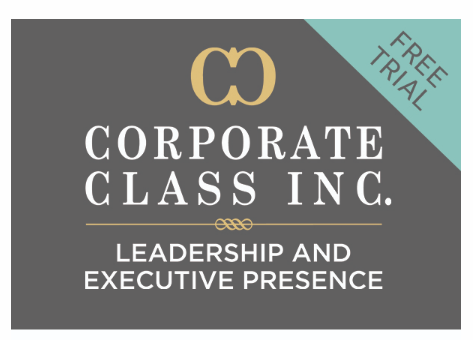Companies provide goods or services to meet customer demands and generate profit for owners and stakeholders. Calculating the return on investment (ROI) for services and goods and allocating a monetary value is relatively simple. Determining the ROI of executive coaching is more challenging but not impossible.
The results of the work we do at Corporate Class only become evident over time and are often deeply personal to the coaching client. There are, however, several methods to measure coaching ROI, as supported by the International Coaching Federation (ICF). Let’s look at executive coaching ROI in more detail.
Personal and Organizational ROI of Executive Coaching
The organizational ROI of executive coaching is much more visible than the personal coaching ROI, which tends to be subtle yet privately empowering. Leadership development is the core purpose of organizational executive coaching, resulting in improved leadership performance with tangible results such as increased productivity and profitability.
Employee engagement and retention increase when leaders are supportive, empathetic, and communicate well. These skills can be developed through coaching. The world is increasingly complex. Coaching enhances the ability of executives to be more adaptable and flexible, ultimately benefiting the organization. A strong leadership pipeline is one of the long-term benefits of executive coaching.
And the personal ROI? People have more harmonious relationships in their professional and personal lives, leading to improved physical and mental health.
How to Measure Executive Coaching Return on Investment
The International Coaching Federation (ICF) states that measuring coaching’s impact is crucial to demonstrating its value. It provides frameworks for evaluating the ROI of executive coaching that must be customized to the individual coaching context, while maintaining three core elements: goal alignment, behavioral change tracking, and impact measurement.
The Business Impact Matrix is one of the measuring tools. It defines and rates tangible and intangible outcomes on a low/medium/high scale. The following are just some of the tangible outcomes coaches can measure:
- Innovation acceleration
- Productivity enhancement
- Employee retention
- Complaint reduction
- Revenue growth
What are examples of the intangible benefits used to measure coaching effectiveness?
- Direct report engagement
- Team cohesion
- Peer networking
- Client relationships
- Conflict reduction
Who Yields the Highest ROI for Coaching?
At Corporate Class, our coaching methodology blends coaching and training, considering contemporary business needs. Leadership coaching, executive presence training, and the development of leadership skills are utilized to achieve optimal results. It is clear that organizations benefit most from executive coaching based on research by MetrixGlobal LLC on the ROI and business benefits of an executive coaching program conducted for a Fortune 500 client. The results show coaching produced a 529% return on investment when program costs were tabulated for all participants.
In 2024, S&P Global, a financial intelligence provider, published an article on women in leadership. Their research shows that women hold only 29.0% of management roles with a revenue-generating function, which is the type of role that leads to the C-suite. Is it time to send aspiring female employees for executive coaching to grow your company’s ROI?
Executive Coaching ROI Statistics and Future Trends
Executive coaching is a powerful tool for developing and enhancing leadership abilities. This was clearly shown in a study on the impact of coaching on female leaders in a global organization. ICF Global Coaching Studies highlight the following coaching ROI statistics:
- 61% of coaching clients state their business management skills improved.
- The average ROI of executive coaching is almost six times the cost of coaching.
What are the future trends according to the 2024 ICF Coaching Snapshot? Mental well-being is a leading growth area based on feedback from coaching clients. Business and career issues are the main drivers for mental well-being support requests as part of an executive coaching plan.
Coaching has a high price-quality ratio. Some benefits are immediately discernible, while others only become evident in the long term. Invest in your leaders to benefit from the ROI of executive coaching. Corporate Class Inc. offers Executive Presence and Leadership Coaching and a Women in Leadership Program. Feel free to reach out to us today for more information.





